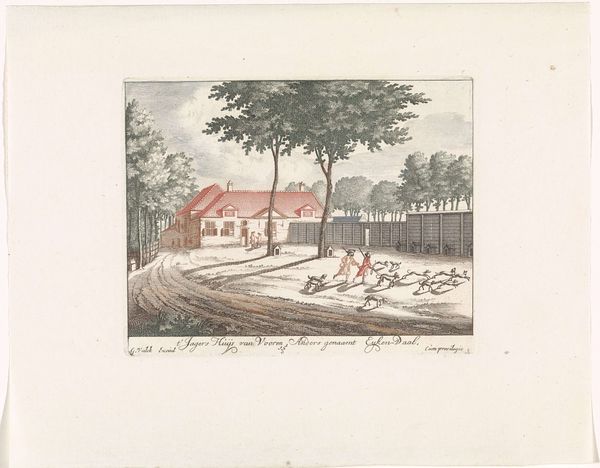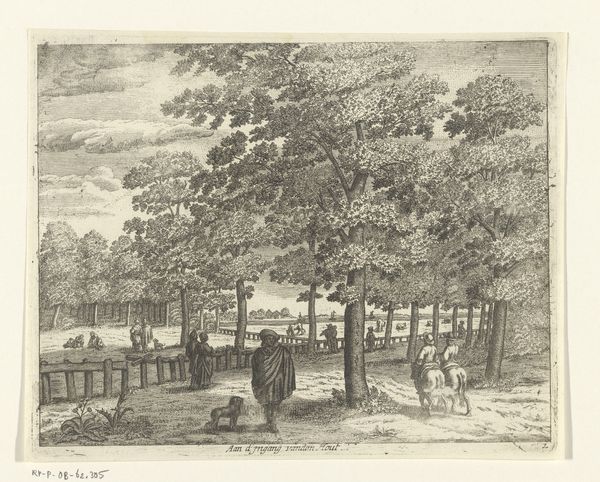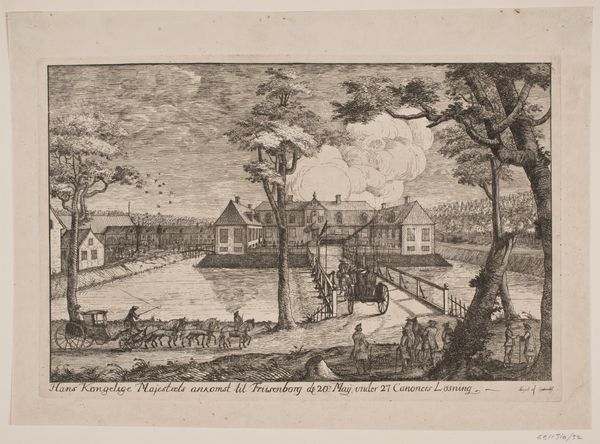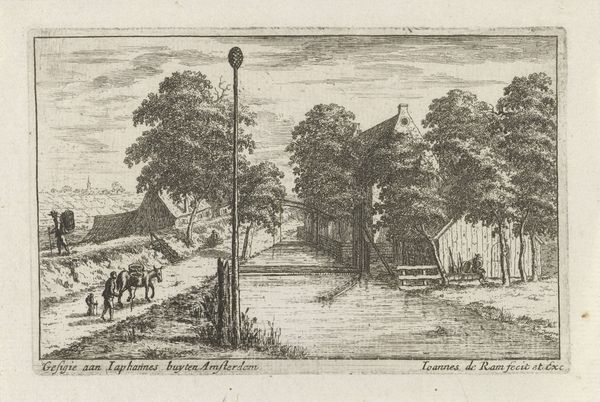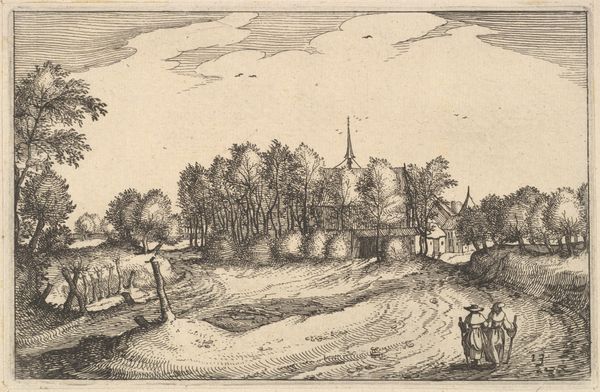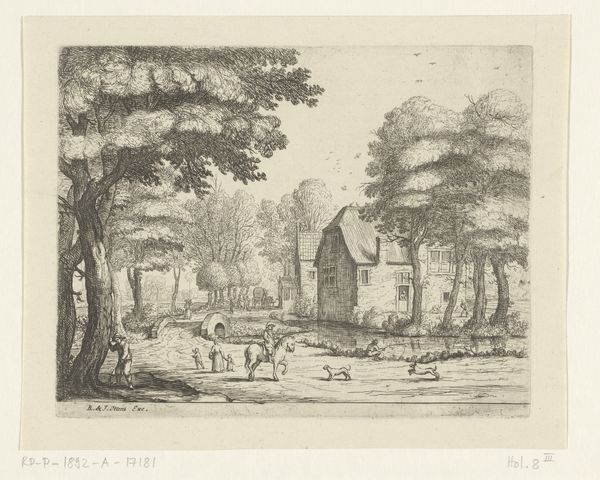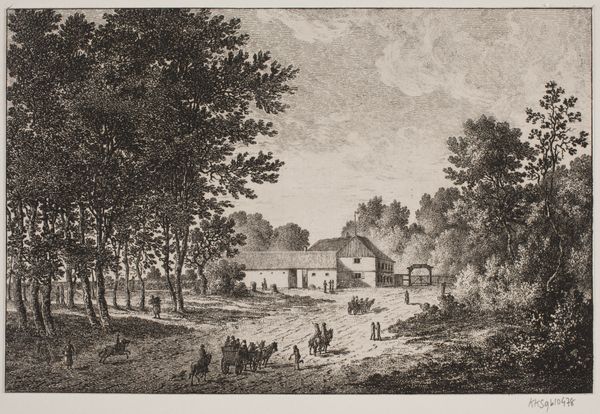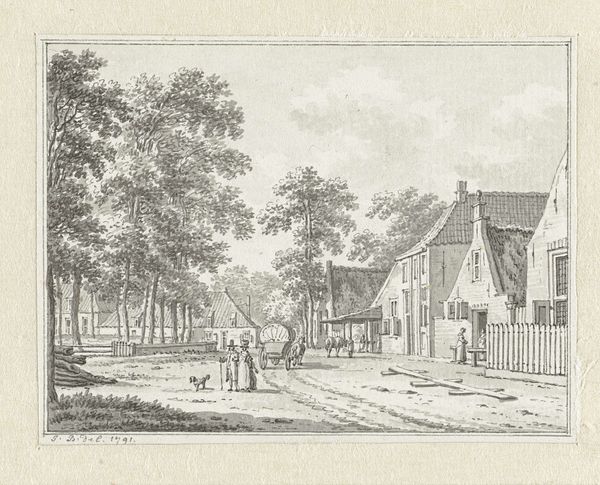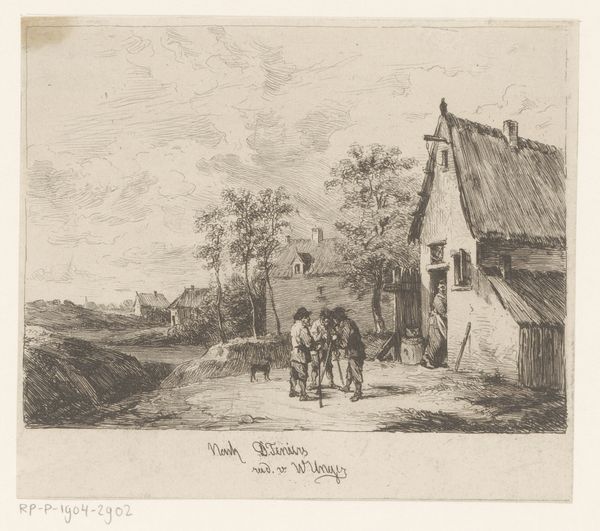
print, engraving
#
baroque
# print
#
landscape
#
genre-painting
#
engraving
Dimensions: height 130 mm, width 161 mm
Copyright: Rijks Museum: Open Domain
Curator: Here in Gallery 222 at the Rijksmuseum, we're looking at an engraving by Hendrik de Leth titled "Jagershuis op het landgoed van Paleis Soestdijk," placing it sometime between 1725 and 1747. It's a busy scene, quite detailed for a relatively small print. Editor: Yes, it strikes me immediately as a moment captured, a lively slice of life from the Dutch Golden Age. There's almost a frenetic energy with the hunting dogs, juxtaposed against the seemingly calm domesticity of the house in the background. Curator: De Leth, primarily known as a mapmaker and publisher, gives us this glimpse into the architecture and aristocratic leisure of the time. Note the prominent Jagershuis, the hunting lodge, sitting squarely in the center, signifying status. Its symmetrical design suggests a building of importance within the estate. Editor: That symmetry certainly reinforces the rigid class structures of the period, doesn't it? The placement of the hunting scene front and center, glorifying the leisure pursuits of the elite, serves as a reminder of who had access to land and resources during that era, while the majority toiled. And this idea is amplified if you observe the parallel constructed from the high rising and artificially shaped trees both behind the estate and behind the dogs on the opposite end, clearly dividing two areas and consequently two purposes. Curator: Absolutely. It reflects the social hierarchy inherent in the Dutch Republic, where land ownership dictated power. Also, consider the dogs. Their portrayal speaks to selective breeding practices to curate perfect companions for a given activity and reinforces ideals related to privilege and perfection. Editor: The seemingly endless dogs running around raise questions around access, consumption, and ethical human relations to animals within wealthy circles. While aesthetically interesting from a distance, it prompts me to think of our current responsibility as modern consumers. Curator: Looking closely at the foreground, de Leth uses sharp, decisive lines to capture the movement of the hunt, creating depth, leading the eye back to the more tranquil, formally arranged backdrop. Editor: And there’s a deliberate lack of attention to detail in the figures which removes the element of individuality and makes them appear less significant, dehumanizing them. In my view, this visual strategy implies that power exists mostly in buildings, breeding practices, or other signs of access. Curator: A poignant observation that invites us to look beyond the surface, seeing this artwork not just as a historical record, but as a mirror reflecting persistent societal patterns. Editor: Exactly. A snapshot of leisure becomes a broader comment on labor, ownership, and how we consume imagery even today.
Comments
No comments
Be the first to comment and join the conversation on the ultimate creative platform.
